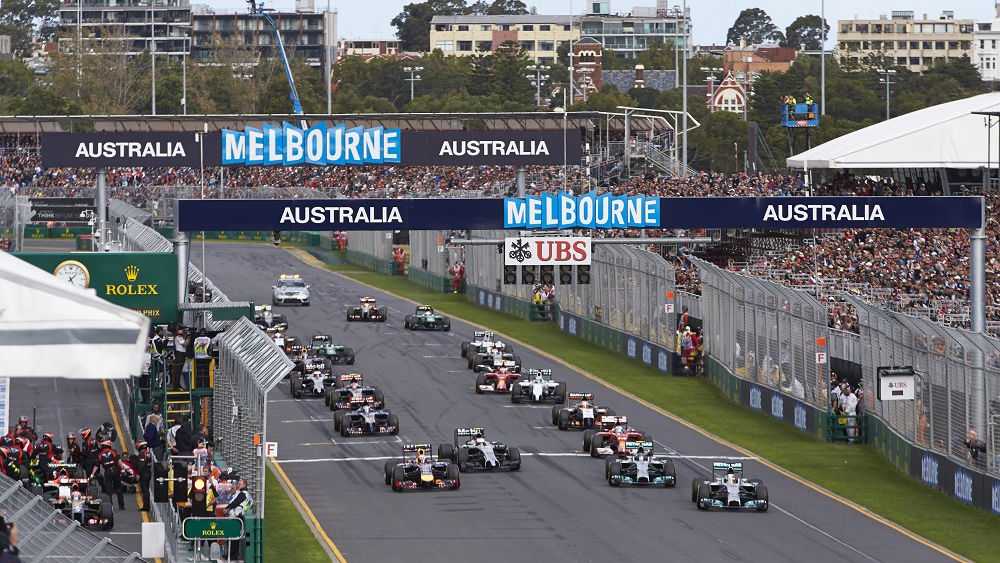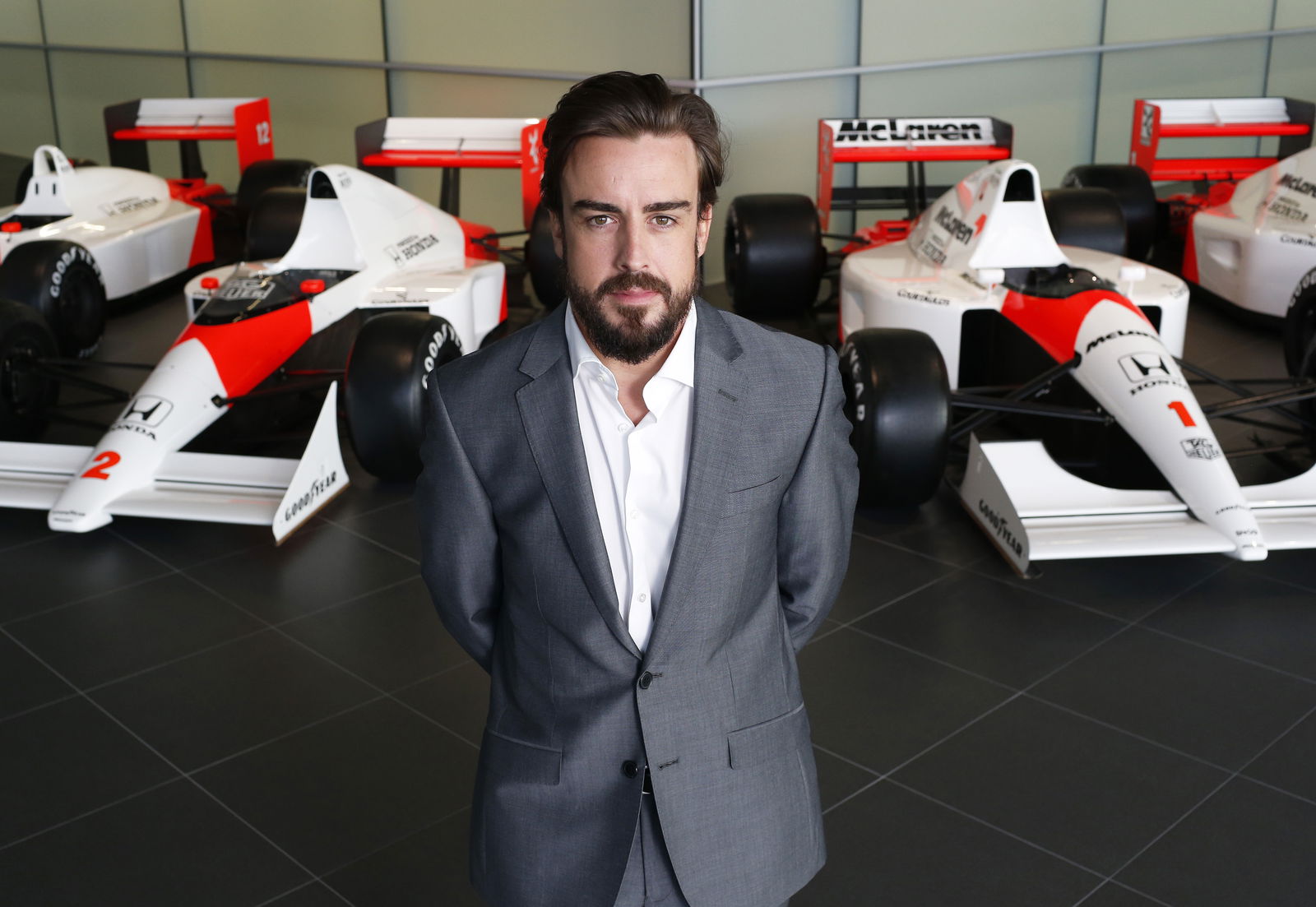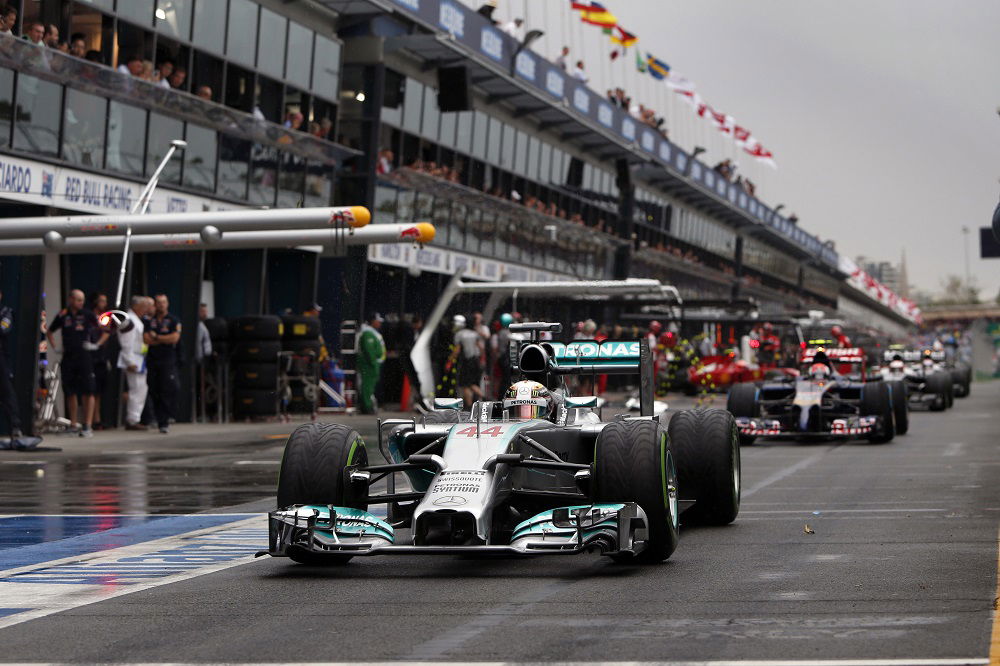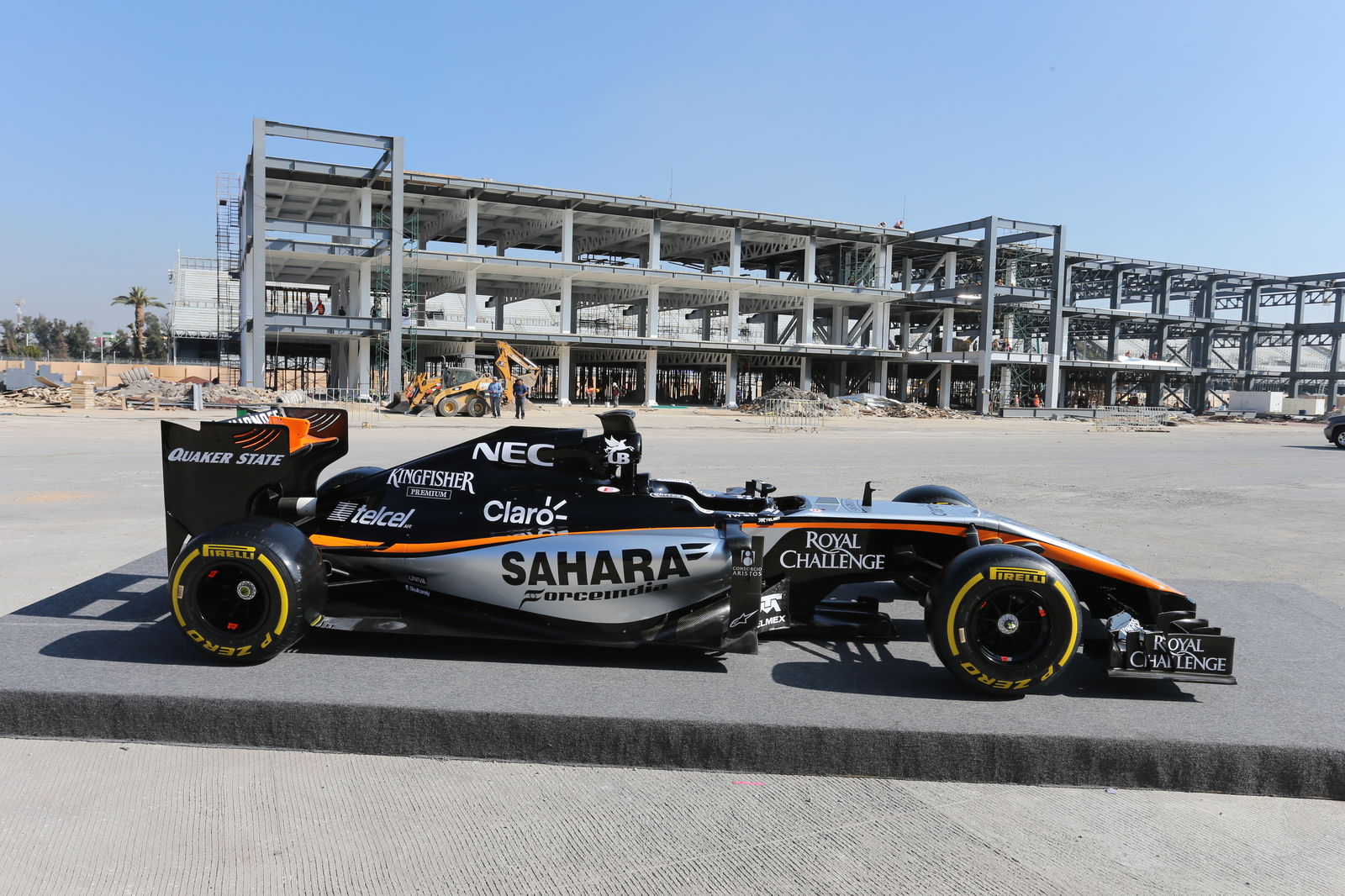Your Ultimate Guide To F1 2015

Winter can be a cruel time for F1 fans. However, fear not, because the start of the 2015 season is just around the corner. Regulations remain relatively stable, but there have been plenty of driver changes and a few modifications to the calendar too. Before testing kicks off next month, here is your guide to the 66th Formula 1 season:
Drivers

Mercedes keeps its successful line-up of 2014 champion Lewis Hamilton and Nico Rosberg, with the duo looking set to do battle for the world title once again. Daniel Ricciardo - undoubtedly the most likeable guy in the paddock - remains at Red Bull Racing, but Sebastian Vettel’s departure means that the team has promoted 2014 Toro Rosso rookie Daniil Kvyat to the hot seat.
Vettel has found a new home at Ferrari, partnering Kimi Raikkonen. Williams retains Felipe Massa and Valtteri Bottas, while Fernando Alonso returns to McLaren to race alongside Jenson Button. Nico Hulkenberg and Sergio Perez have stayed at Force India.
17-year-old Max Verstappen will become the youngest ever F1 driver when he makes his debut for Toro Rosso in Australia alongside Carlos Sainz Jr, meaning an all-rookie line-up for the Italian outfit. Romain Grosjean and Pastor Maldonado remain at Lotus, while Sauber has hired Marcus Ericsson – who raced for Caterham last year – and GP2 race winner Felipe Nasr.
Teams

Just nine teams look set to compete in F1 this year, following the sad demise of Marussia and Caterham. Both have been provisionally listed on the 2015 entry list - under the Manor F1 Team and CF1 Caterham F1 Team names - but the two backmarkers are quickly running out of time to find investors after entering administration last October.
Elsewhere, McLaren has ditched Mercedes power in favour of Honda engines. The Japanese manufacturer returns to F1 for the first time since 2008, and rekindles its iconic partnership with the Woking-based team from the late 1980s and early 90s. Lotus has switched from Renault to Mercedes power units for 2015.
Calendar

The F1 2015 season kicks off on 1-4 February with the opening winter test in Jerez, Spain. Two further four-day events will take place next month, this time in Barcelona, before the first race of the year in Australia on the 15 March.
Two in-season tests, each lasting two days, are scheduled to take place in Spain and Austria. There will be 20 rounds this year, thanks to the addition of Mexico (track redevelopment pictured above), and the season will conclude in Abu Dhabi on the 29 November.
March 13-15 Australia (Melbourne)
March 27-29 Malaysia (Sepang)
April 10-12 China (Shanghai)
April 17-19 Bahrain (Sakhir)
May 8-10 Spain (Barcelona)
May 21-24 Monaco
June 5-7 Canada (Montreal)
June 19-21 Austria (Spielberg)
July 3-5 Great Britain (Silverstone)
July 17-19 Germany (TBA)
July 24-26 Hungary (Budapest)
August 21-23 Belgium (Spa-Francorchamps)
September 4-6 Italy (Monza)
September 18-20 Singapore
September 25-27 Japan (Suzuka)
October 9-11 Russia (Sochi)
October 23-25 USA (Austin)
October 31-November 1 Mexico (Mexico City)
November 13-15 Brazil (Interlagos)
November 27-29 Abu Dhabi (Yas Marina)
Regulations

The rules have remained fairly stable compared to last season. Starting with the technical regulations, the number of power units per driver has been reduced from five to four for 2015. Engine development will be allowed (current manufacturers have 32 tokens, which is around 48 per cent of the power unit, although newcomers Honda will get less) throughout the year after the FIA admitted to there being a loophole in the regulations.
After the phallic nose designs of 2014 and following more safety concerns, changes have been made for this season. Noses will now be lower compared to last year, retaining a minimum cross section. Other tweaks mean the previous ‘finger’ shape and the Lotus E22’s ‘twin-tusk’ design will not be allowed.
We’ve already seen a glimpse of the new nose rules from Williams and Lotus. The minimum weight of 2015 cars has increased to 702kg. Wind tunnel hours have been restricted from 80 hours per week to 65 and each team must nominate one facility to use.

On the sporting side of things, the team radio ban will be extended and - thank goodness - double points will not be awarded at any races this year. A new Virtual Safety Car (VSC) procedure has been introduced - following Jules Bianchi’s 2014 Japanese GP crash - and a tweaked safety car procedure means once the order is sorted, drivers won’t have to wait for lapped cars to catch up to the back of the pack.
If there is a red flag, drivers will line up in the pit lane, and if there are still team personnel or equipment on the grid at the 15 second signal prior to the warm-up lap, the driver of the car concerned will have to start from the pits. Power unit penalties will not be carried over to following races, but time or stop/go penalties may be handed out. Replacing a full power unit will not result in pit lane start, but instead penalties will be applied for individual components.
A new 10-second stop/go penalty will be introduced in 2015. If a driver is released from a pit stop unsafely, this penalty will be handed out. Finally the qualifying procedure has been clarified to cater for different grid sizes. It looks like there will be 18 cars racing this year, so four will each be eliminated in Q1 and Q2.
Are you as excited as we are about the new F1 season?
Comments